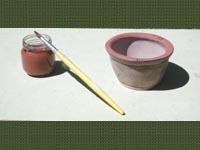EASTERN | DESERT | WARE
EXPERIMENTAL | POTTERY | PRODUCTION
|
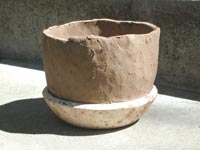
|
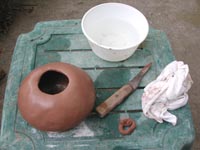
|
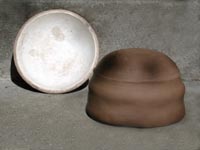
|
| The basic shape of the pot
is formed by pinching it out of a ball of clay, smoothing out a spiral of
clay or by connecting a ring of clay to a flat bottom. |
Immediately after this the
surfaces are smoothed and handles or a spout are attached. Tools that may
prove helpful include a knife and a plaster mold.
|
A few hours later the pot
is 'leather hard'. Its form can no longer be changed, but the surfaces can
be corrected and impressed or incised decorations can be made. |
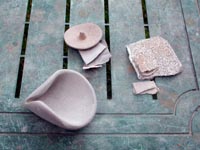
|
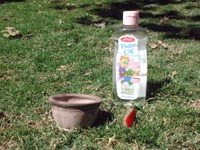
|
|
After about a week the pot
is 'bone dry'. It can now be sanded to correct uneven surfaces or shape. In
antiquity sand or pumice may have been used.
|
The pot, or part of it,
can now be 'burnished' (polished) by rubbing a stone, or the back of a spoon,
over the slightly oiled, or slipped, surface. |
A 'slip' is a thin suspension
of clay that is used prepare the clay for burnishing or changing the color
of a pot. Clays that make good slip are highly valued.
|
|
|
|
|





